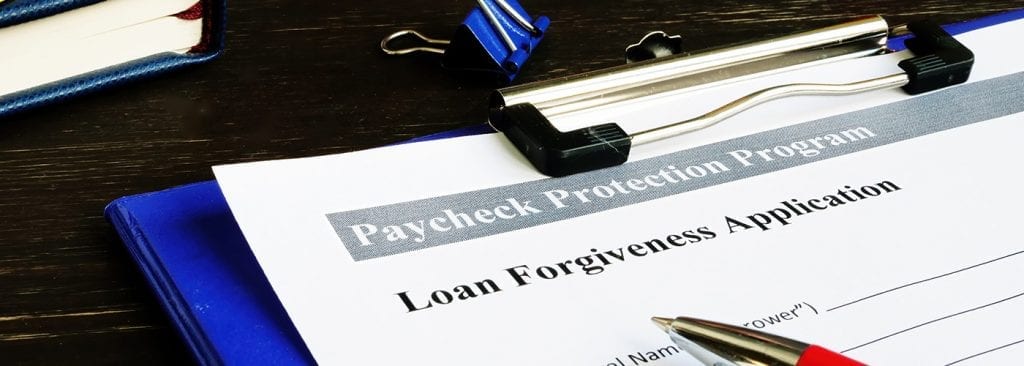
Don’t Worry, Help Is On The Way – It’s Just Gonna Take A Little Longer
Claiming a portion of the Paycheck Protection Program (PPP) isn’t necessarily an easy process – especially if your the owner of a small business. That’s why those of us in the CPA profession have spent countless hours going over all the details so you don’t have to. But even though we’ve dug through the legislation and emersed ourselves in webinars and town hall meetings, we still have questions. That’s why the American Institute of CPAs (AICPA) recently sent a letter to the U.S. Small Business Administration (SBA) to request clarification on “a number of very significant operational changes to the PPP by the SBA which are not fully understood, as well as some process and system issues which need to be addressed in order to effectively provide critical relief to eligible organizations.”
Prior to the AICPA’s letter being sent, the organization presented a PPP Town Hall meeting where they addressed four key points. These points are outlined below and we’ve tried to clarify what each one means to you as you move forward with the PPP 2.0 application process.
Read Also: Take A Look At The New PPP Legislation
SBA Sets Priorities
Since the start of PPP 2.0, the loan forgiveness process already in place from PPP 1.0 has slowed significantly or, in some cases, even paused while new PPP loan applications are being processed. This is because the SBA is prioritizing the disbursement of second draw loans. That being said, while the entire PPP loan forgiveness exercise is taking longer than anticipated, we would like to urge you to remain patient. If you’ve already applied for loan forgiveness and are still waiting on a response, rest assured that your application will be processed – it’s just taking a little longer than expected. In the meantime, note that you are not required to make loan payments during this limbo period.
Fraud Protection Measures
Based on a review that was conducted on the initial PPP process, the SBA implemented fraud prevention and application review steps to guard against fraudulent claims. Unfortunately, as a result of these added steps, tens of thousands of legitimate applications have been incorrectly denied acceptance by the SBA. In many instances, what is being seen, is that the small business owner is being incorrectly notified that they have a criminal record. Even after taking the time to redo their certifications, borrowers may still be declined on the same application due to another incorrect validation rule. Furthermore, the SBA E-Tran system is flagging 20-30 percent of all first- and second-draw PPP applications for additional review based on validation checks. There are currently more than 40 different “error codes” related to these additional information requests and the process for resolving these error codes is unclear.
Check Out The On-Demand Webinar, “What Does The New Stimulus Bill Mean For Business,” to learn more.
Economic Uncertainty
Just because a business meets the gross receipts reduction requirement does not mean they should automatically apply for PPP 2.0. They must still be able to provide economic uncertainty certification in good faith. Furthermore, economic uncertainty has drastically changed since last April. The industry in which your business operates makes a huge difference when it comes to securing financial assistance.
The SBA has prepared a questionnaire for those who are on the fence regarding certification. Business owners should click here to access the resource and leaders of nonprofit organizations should click here. If you have further questions, reach out to your Rea advisor or a member of the firm’s PPP task force.
Check out Rea’s COVID Resource Center For Assistance, Announcements, Insight, & More.
Flush With Cash
While the need for financial assistance through PPP 2.0 continues to be great, it’s important to know that there is plenty of cash available for organizations in need. The reality is that the demand for PPP 2.0 loans is much less than the first time around because of the gross receipts requirement. This was expected to be the case. It’s also important to note that the SBA’s loan processing system has put in place a loan eligibility amount cap of $35,000 per employee for both first- and second-draw applications. Unfortunately, we have no explanation for the existence of these caps but are working toward getting answers from the SBA as soon as possible. In any case, when it comes to considering whether or not you should apply for PPP 2.0, we would like to encourage you to be very deliberate in the decision-making process.
Next Steps
Despite the issues that applicants are currently facing with regard to applying for and receiving PPP 2.0 loan disbursement, from Jan. 11 to Jan. 31, the SBA had already approved nearly 900,000 loans totaling $72.2 billion. There is about $212 billion still available. If you do decide to move forward with the application process, remember that the deadline to apply for PPP 2.0 is March 31, 2021. If you have any questions about the application process, the loan forgiveness process, or anything else pertaining to securing financial assistance during the COVID recovery phase, please reach out to me, or a member of the PPP task force for assistance.
By Paul McEwan, CPA, MTax, AIFA (New Philadelphia office)
Looking for more business insight on your way to financial recovery? Check out these resources:
[ARTICLE] How The Consolidated Appropriations Act Will Impact Your State & Local Tax Filings
[ARTICLE] Understanding The Tax Provisions Outlined In The New Stimulus Package
[WHITEPAPER] IRS Issues Guidance That Impacts Deductibility Of Expenses Related To PPP Loan Funds
